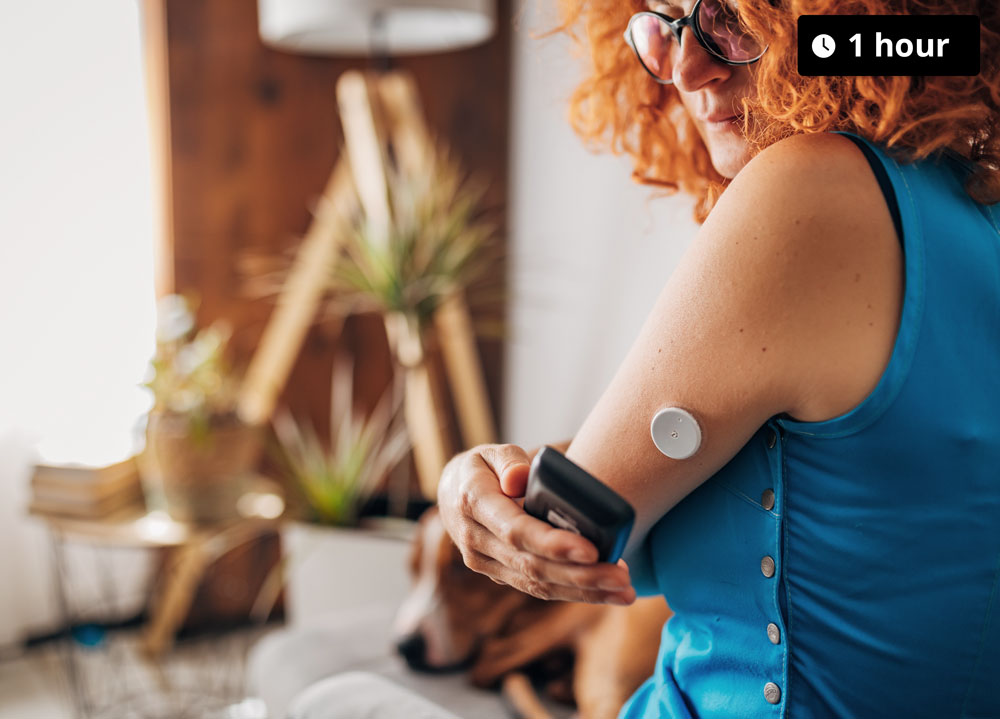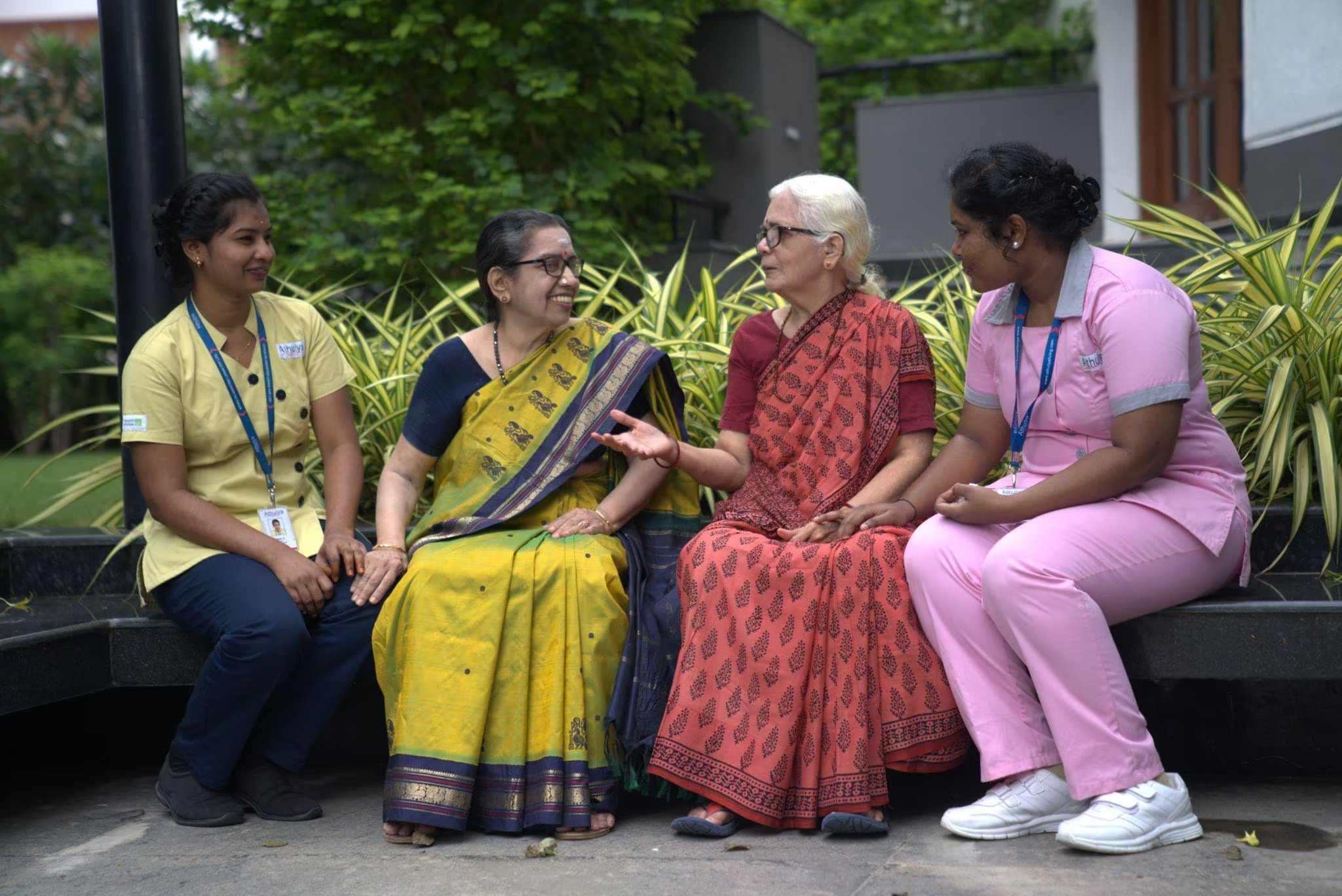Free Style Libre Pro is ideal for continuous glucose monitoring during pregnancy. Gestational diabetes is a type of diabetes that can develop during pregnancy in women who don't already have diabetes. Every year, 2% to 10% of pregnancies in the United States are affected by gestational diabetes. Managing gestational diabetes will make sure you have a healthy pregnancy and a healthy baby.

What is Gestational Diabetes ?
Gestational diabetes occurs when your body can’t make enough insulin during your pregnancy. Insulin is a hormone made by your pancreas that acts like a key to let blood sugar into the cells in your body for use as energy.
During pregnancy, your body makes more hormones and goes through other changes, such as weight gain. These changes cause your body’s cells to use insulin less effectively, a condition called insulin resistance. Insulin resistance increases your body’s need for insulin.
All pregnant women have some insulin resistance during late pregnancy. However, some women have insulin resistance even before they get pregnant. They start pregnancy with an increased need for insulin and are more likely to have gestational diabetes.
Why this can be a potential threat for both baby & mother ?

High blood sugar can cause problem all over the body. It can damage blood vessels and nerves. It can harm the eyes, kidneys, and heart. In early pregnancy, high blood sugar can lead to birth defects in a growing baby.
Having gestational diabetes can increase your risk of high blood pressure during pregnancy. It can also increase your risk of having a large baby that needs to be delivered by cesarean section (C-section).
Risk:
- Being very large (9 pounds or more), which can make delivery more difficult
- Being born early, which can cause breathing and other problems
- Having low blood sugar
- Developing type 2 diabetes later in life
Who are at risk ?
The risk factors for diabetes in pregnancy depend on the type of diabetes:
- Type 1 diabetes often occurs in children or young adults, but it can start at any age.
- Overweight women are more likely to have Type 2 diabetes.
- Overweight women are more likely to have gestational diabetes. It’s also more common in women who have had gestational diabetes before. And it’s more common in women who have a family member with Type 2 diabetes. Women with twins or other multiples are also more likely to have it.
Is this curable ?
Gestational
diabetes goes away after you give birth. But it can affect your baby’s health, and it raises your risk of getting type 2 diabetes later in life.
You can take steps so you and your baby stay healthy.
What are the long term complication of developing GDM ?
Risk
of gestational diabetes — One-third to two-thirds of women who have gestational
diabetes in one pregnancy will have it again in a later pregnancy. If you are
overweight or obese, weight reduction through diet and exercise can reduce this
risk.
Risk
of type 2 diabetes — Women with gestational diabetes have an increased risk
of developing type 2 diabetes later in life, especially if the woman has other
risk factors (eg, obesity, family history of type 2 diabetes).
The
risk of developing type 2 diabetes is greatly affected by body weight. Women
who are obese have a 50 to 75 percent risk of type 2 diabetes, while women who
are a normal weight have a less-than-25 percent risk. If you are overweight or
obese, you can reduce your risk of type 2 diabetes by losing weight and
exercising regularly.
The
American Diabetes Association (ADA) recommends that all women with a history of
gestational diabetes have testing for type 2 diabetes every one to three years
after their initial post-pregnancy test for diabetes. If you have elevations in
your blood sugars in the pre-diabetes range at the time of your postpartum
screening, the ADA recommends testing yearly testing. It is also recommended
that you work with your primary care provider to eat healthfully, lose any
excess weight, and exercise regularly to help decrease your risk of developing type
2 diabetes.
What I need to do ?
Check your Blood Sugar level frequently, as suggested by your doctor, to track your glycaemic control. Libre Pro Sensor is ideal for continuous glucose monitoring.
It’s important to be tested for gestational diabetes so you can begin treatment to protect your health and your baby’s health.
Gestational diabetes usually develops around the 24th week of pregnancy, so you’ll probably be tested between 24 and 28 weeks. If you’re at higher risk for gestational diabetes, your doctor may test you earlier. Blood sugar that’s higher than normal early in your pregnancy may indicate you have type 1 or type 2 diabetes rather than gestational diabetes.

Conclusion: Current updated evidence suggests that CGM (Continuous Glucose Monitoring) is superior to SMBG (Standard Glucometer) among GDM pregnancies in terms of detecting hypoglycemic and hyperglycemic episodes, which might result in an improvement of maternal and fetal outcomes. In addition, CGM detects a wider glycemic variability in GDM mothers than non-GDM controls. Further research with larger sample sizes and complete pregnancy coverage is needed to explore the clinical utility such as screening and predictive values of CGM for GDM
What is Continuous Glucose Monitor or CGM ?
Continuous glucose monitoring (CGM) devices help you manage Type 1 or Type 2 diabetes with fewer finger stick tests. A sensor just under your skin measures your glucose levels 24 hours a day. A transmitter sends results to a wearable device or cell phone. It takes time to learn how to use CGM, but it can help you more easily manage your health. Libre Pro sensor is the most convenient way to do Continuous Glucose Monitoring.
How does a CGM machine works ?
You can choose among a handful of CGM
devices available today. Each works pretty much the same way. The main
differences are in a device’s look, feel and features.
In general, here’s how CGM works:
1.
You place a small sensor just under
your skin, usually on your belly or arm. An applicator makes this part quick
and easy to do. Adhesive tape holds the sensor in place.
2.
The sensor measures glucose levels in
the fluid under your skin. Most CGM devices take readings every five minutes,
all day and night. You’ll need to change the sensor regularly based on the
device. For most devices, you change sensors at home every 7 to 14 days. For
some long-term implantable CGM devices, your healthcare provider will change
the sensor in a procedure in their office a handful of times (or less) each
year.
3.
All CGM systems use a transmitter to
wirelessly send the glucose data from the sensor to a device where you can view
it. For some CGM systems, the transmitter is reusable and attaches to each new
sensor. For other CGM systems, the transmitter is part of the disposable
sensor.
4.
Depending on the CGM system, glucose
data from the sensor is sent to either a handheld device called a receiver
(similar to a cell phone), an app on your smartphone or an insulin pump.
5.
You can download CGM data (real-time
glucose levels, trends and history) to a computer anytime. Some CGM systems
will send data continuously. You can also share the information with your
provider.
What is Free style Libre Pro Sensor?
Free Style Libre Pro Sensor is a revolutionary product that helps you track your glucose levels without finger-pricks. FreeStyle Libre is a sensor-based glucose monitoring system that comes with a reader and a sensor. The sensor is applied on to the back of your upper arm and can be worn for up to 14 days. Simply swipe the reader over the sensor to get a complete picture of your glucose levels.

Instead of taking glucose readings from your blood, Libre Pro Sensor glucose readings are taken from the interstitial fluid (ISF), a thin layer of fluid that surrounds the cells of the tissues below your skin. Blood glucose readings tend to be about 5 to 10 minutes ahead of interstitial glucose readings.

Freestyle Libre Pro Sensor shows you where your glucose levels were, where they are in the moment, and where they’re headed. It also helps you see the impact of food, medicine, physical activity on your glucose levels. When you can see trends and patterns, you can make more informed insulin dosing decisions. CGM uses a small sensor paired with your smartphone or a reader, instead of fingersticks.






